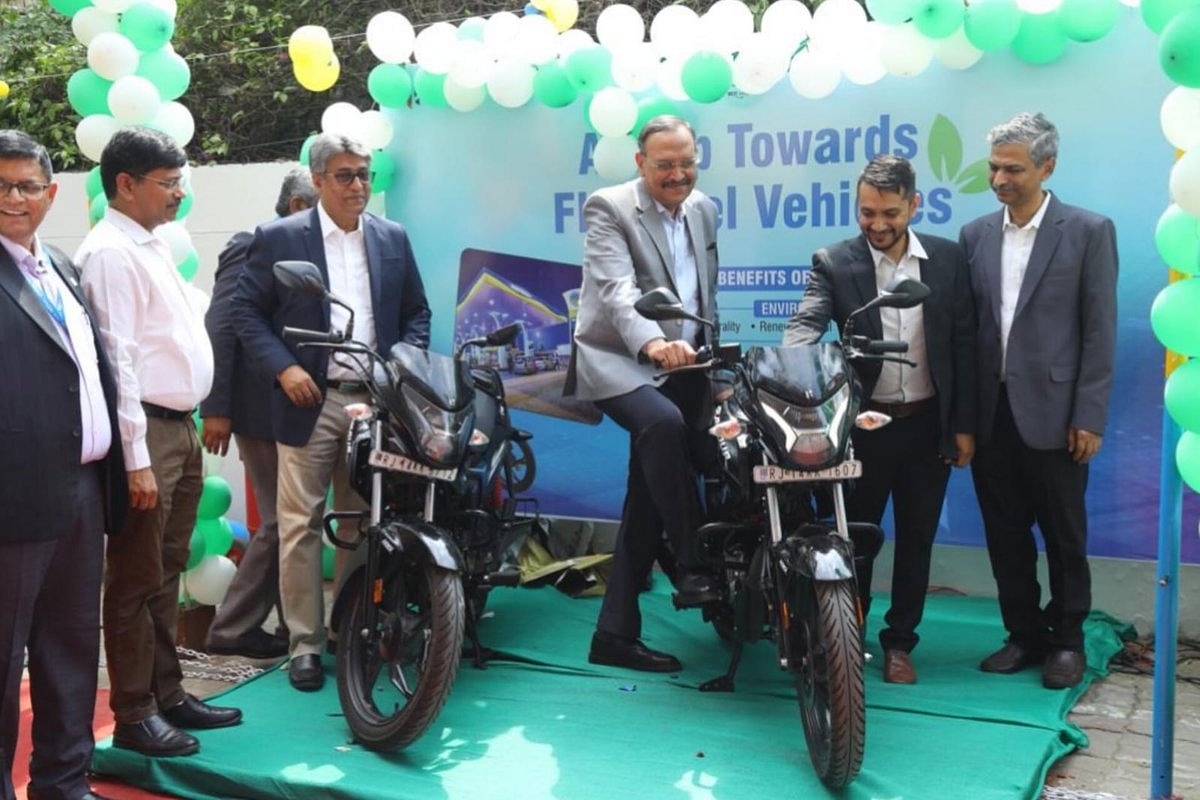Infrastructure
India Moves Closer To Getting Ethanol-Blended Diesel As BPCL Starts Pilot Exercise To Test ED7 Blend Fuel
- Ethanol is an agricultural by-product which is mainly obtained from the processing of sugar from sugarcane, but also from other sources such as rice husk or maize.
- At present, 10 per cent ethanol is blended in petrol (E10) and the government is looking to double this quantity by 2025.

Officials from BPCL and Ashok Leyland at the launch of pilot ED7 fuel.
Government-owned refiner and fuel retailer Bharat Petroleum Corporation (BPCL) and truck manufacturer Ashok Leyland have initiated a pilot programme to test the effectiveness of diesel spiked with ethanol.
The ED7 fuel, developed by Bharat Petroleum’s Research and Development (R&D) division consists of 93 per cent diesel and 7 per cent ethanol.
“BPCL has commenced supply of E20 in many cities across the nation. Today’s flag off of the Pilot ED7 for buses with Ashok Leyland is a step by BPCL towards our country’s aim of reducing import bill and providing sustainability,” BPCL CMD G Krishnakumar said.
Prior to the pilot exercise, Ashok Leyland conducted extensive laboratory trials on their engines using the ED7 fuel. The fuel blend showcases a remarkable reduction in pollution levels, including particulate matter and Nitrogen oxides (NOx).
After the pilot programme, a comprehensive report will be submitted to Automotive Research Association of India (ARAI), the Ministry of Road Transport and Highways (MoRT&H) and the Ministry of Petroleum and Natural Gas (MoPNG) for developing a roadmap for commercial implementation of the fuel, BPCL said.
Ethanol-Blending
Pure ethanol — 100 per cent ethanol or E100 — could theoretically be used to power vehicles, but generally isn’t, due to technical challenges and lack of financial viability.
Ethanol, thus, is mixed with petrol to form different blends. The commonly used blends are E5 (5 per cent ethanol, 95 per cent petrol) E10 (10 per cent ethanol, 90 per cent petrol), or E85 (85 per cent ethanol by volume and known as flex fuel).
Ethanol is an agricultural by-product which is mainly obtained from the processing of sugar from sugarcane, but also from other sources such as rice husk or maize.
At present, 10 per cent ethanol is blended in petrol (E10) and the government is looking to double this quantity by 2025.
Differing Chemistry
However, unlike petrol, blending ethanol in diesel was not seriously considered until recently as the chemistry of diesel prevents homogeneous blending with ethanol, rendering it unsuitable for use as a transportation fuel.
Second, ethanol, like petrol, is a class A product but diesel is a class B product, which causes ‘knocking’ during the ignition stage and is, therefore, a huge headache for vehicle manufacturers.
This is one of the fundamental reasons why ethanol-petrol blending has already reached 12 per cent nationally, whereas biodiesel remains at around 0.1 per cent.
However, BPCL has developed a binder or additive, which facilitates homogeneous blending of ethanol with diesel — most importantly cetane number and lubricity.
If the trials end up being successful and establish technical and commercial viability, they could pave the way for large-scale blending of ethanol in diesel, in the years to come.
Ethanol blending will help bring down our share of oil imports on which we spend a considerable amount of precious foreign exchange.
To put this into perspective, India’s reliance on imported crude increased to a record 87.3 per cent of domestic consumption in 2022-23, up from 85.5 per cent in 2021-22, 84.4 per cent in 2020-21, 85 per cent in 2019-20, and 83.8 per cent in 2018-19.
Support Swarajya's 50 Ground Reports Project & Sponsor A Story
Every general election Swarajya does a 50 ground reports project.
Aimed only at serious readers and those who appreciate the nuances of political undercurrents, the project provides a sense of India's electoral landscape. As you know, these reports are produced after considerable investment of travel, time and effort on the ground.
This time too we've kicked off the project in style and have covered over 30 constituencies already. If you're someone who appreciates such work and have enjoyed our coverage please consider sponsoring a ground report for just Rs 2999 to Rs 19,999 - it goes a long way in helping us produce more quality reportage.
You can also back this project by becoming a subscriber for as little as Rs 999 - so do click on this links and choose a plan that suits you and back us.
Click below to contribute.
Latest